One must go a long way back—to 1970, in fact, to find a first-half as bad for investors as H1 2022.
The S&P 500 fell nearly 21% in the half and 8.4% in June. For the year to date, the index ended down 19.7%. Just 57 stocks finished higher in the month, the lowest total since March 2020, when the COVID-19 pandemic erupted.
The NASDAQ Composite slumped 29.5% in the half. Its 22.4% second-quarter drubbing was its worst since the fourth quarter of 2008.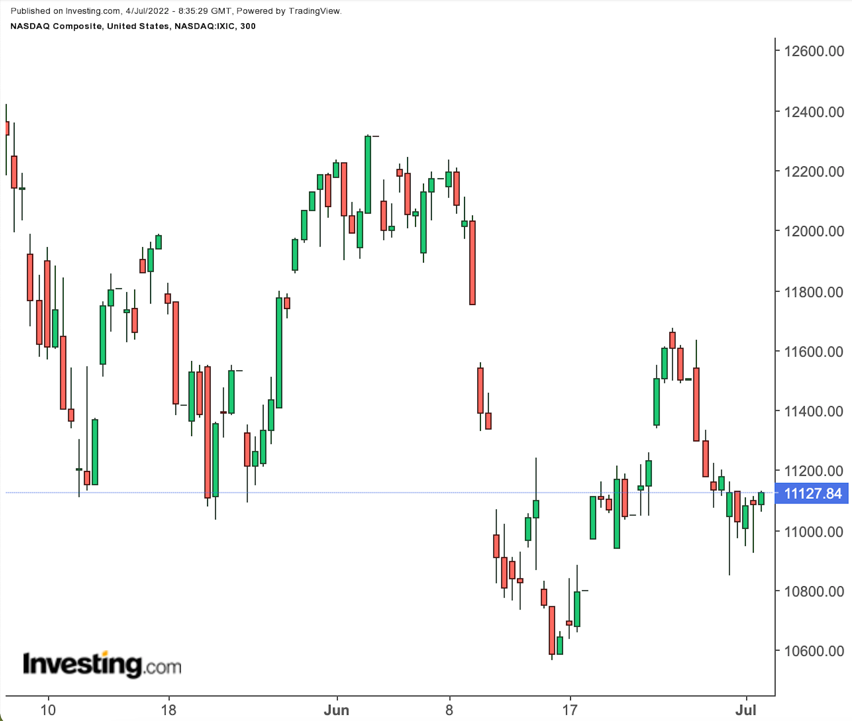
The Dow Jones Industrial Average dropped “only” 15.3% in the half and 11.25% in the second quarter.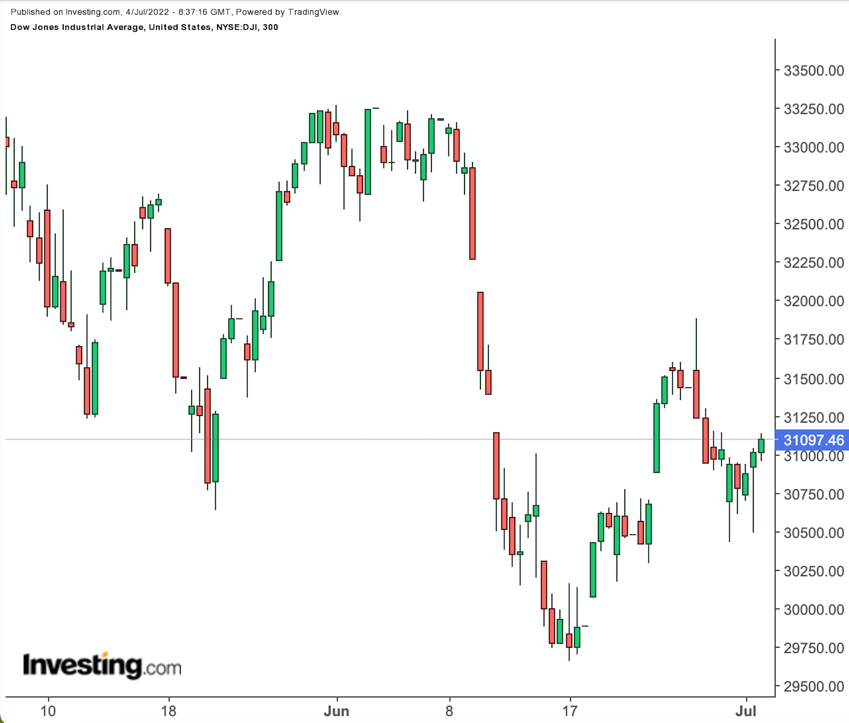
After a smackdown that bad, a rebound is in the offing, right? Just like after the pandemic set off a mini-crash in 2020?
The short answer is maybe.
There is, however, a lot going on that could easily derail a rebound. Inflationary pressures, political uncertainty in the US and elsewhere, commodity prices as well as unraveling the supply chain mess that’s bedeviled the global economy since the COVID-19 pandemic erupted.
So, yes, a recovery depends on the US Federal Reserve.
Since November, however, the Fed has been focused on fighting inflation, promising somehow to get it to its stated goal of 2% a year. The central bank raised its key interest rate to 1.5% to 1.75% this year after dropping it basically to zero during the worst of the pandemic. It is expected to boost rates twice more in 2022—at the end of July and in the fall.
The Fed’s efforts have pushed the 10-year Treasury yield up from 0.92% at the end of 2020 to 1.51% at the end of 2021, and to 3.43% by June. The rate on a 30-year mortgage is about 5.8%, up from 3.1% at the end of 2021.
Hiking rates doesn’t help stock prices, high-flying tech stocks, and crypto currencies. Initial public offerings have nearly disappeared. Higher rates may be dampening home-price appreciation already, and there is even talk about a recession in 2023, if not sooner.
Microsoft (NASDAQ:MSFT) cut its guidance for its June 30 quarter, sending its stock down 5.3% in June.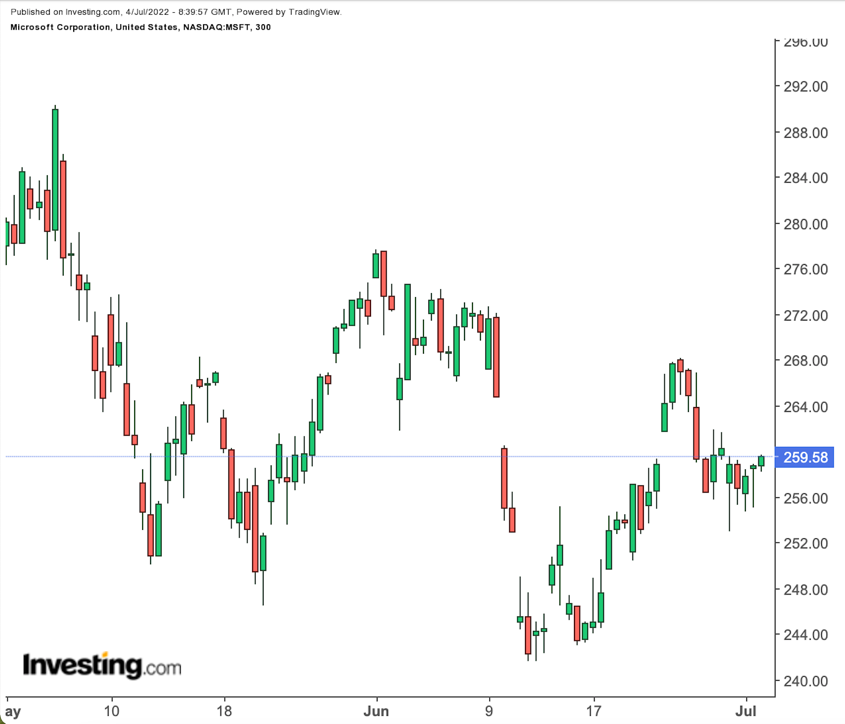
Target (NYSE:TGT) cut its third-quarter guidance in part because it has bloated inventories of home goods and knocked prices lower to get the excess merchandise out the door. Shares dropped 12.8% for the month and were off 38% for the first half.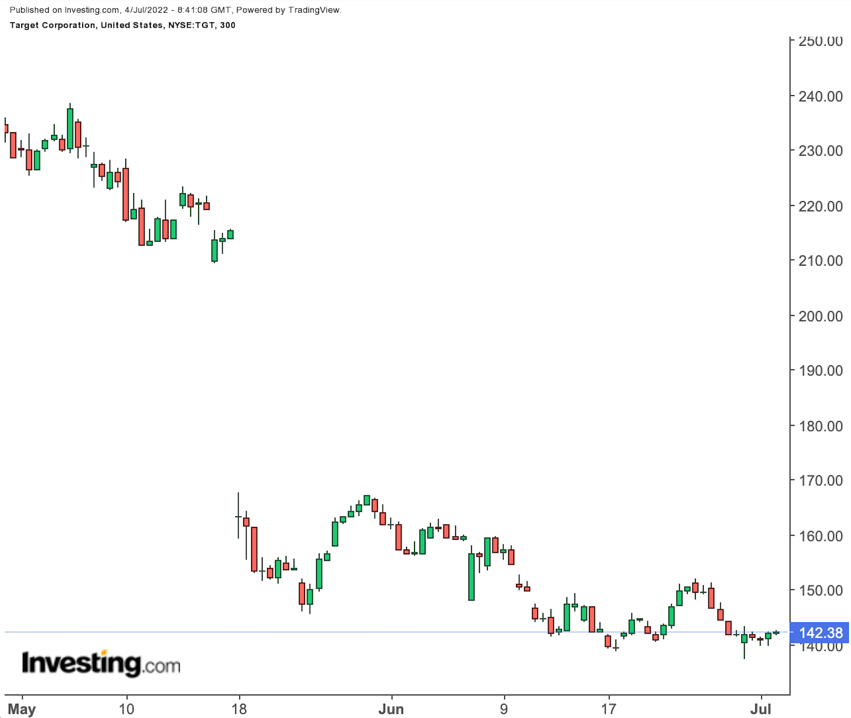
JPMorgan Chase (NYSE:JPM) CEO Jamie Dimon warned inflation, and the rate increases, plus the Ukraine-Russia war could produce a hurricane of trouble.
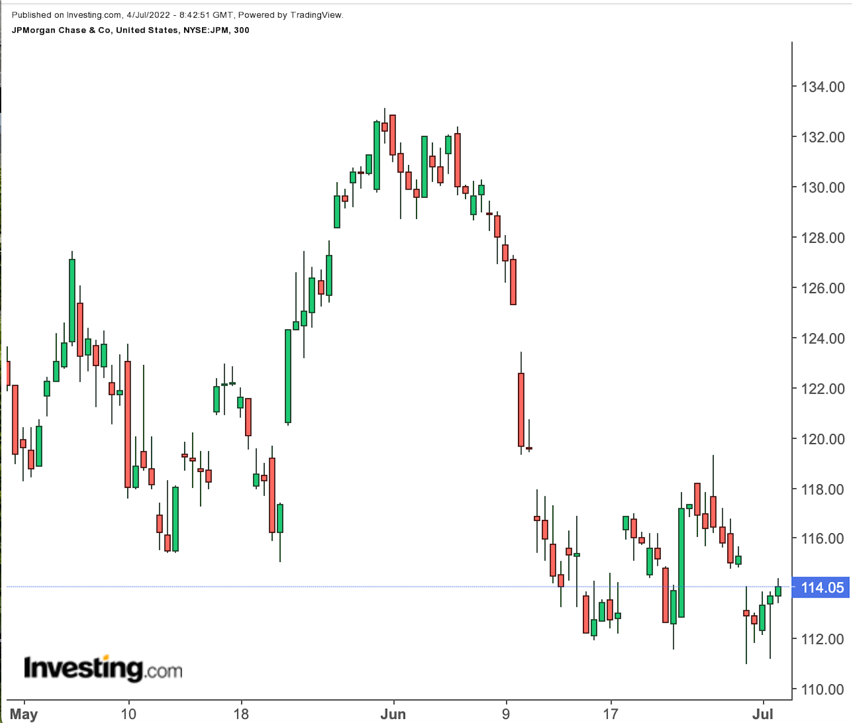
In other words, the go-go markets of the last decade are destabilized. Bubbles have burst, lifestyles disrupted by every trip to the grocery store.
Look at crypto currencies. Bitcoin shot up to nearly $69,000 intraday on Nov. 10 and has fallen 72% since. It is off 58% for the year. As of Saturday, ETH/USD, the second most popular crypto, was off 71% for the year. It had risen 467% in 2020 and was up 553.7% in 2021 when the market broke. It’s off 77% since its $4,808.28 peak.
The number of Initial Public Offerings has also tumbled to just 21 in the second quarter, down from 118 a year earlier and the worst second-quarter showing since 2009. The business collapsed because companies and their sponsors were selling sales growth with profits an afterthought. If it sounds like the dot.com bubble of the early 2000s, you’re right.
Stocks of many companies that came public in recent years have slumped well below their IPO prices. And investment bankers are struggling to generate interest in new IPOs. "The third quarter is likely to be 'quiet',” said Matt Kennedy, senior market IPO analyst at Renaissance Capital, a major research and consulting firm focusing on IPOs.
Just one IPO came public last week: Ivanhoe Electric (NASDAQ:IE), a Canadian mining company that raised $169 million in an offering priced at $11.75. Ivanhoe expects to explore and mine for metals used in batteries. Revenue may not come in for several years.
The shares fell back once public trading began and ended the week at $9.12, down 22.4% from the IPO sale.
When the second quarter ended on Thursday, West Texas intermediate crude oil was at $105.76 a barrel, up nearly 41% for the year. It jumped to $108.43 on Friday. But here’s some solace for consumers. Crude is down from $122.11 a barrel on June 8.
According to the American Automobile Association’s AAA Gas Prices, the average price of gasoline in the United States, now at $4.812 a gallon on Sunday, is off 4.1% from its June 14 peak of $5.016 a gallon.
A trip to the store shows you global interconnectedness. Along with supply-chain problems is the effect of the Ukraine-Russia war on global food markets. Wheat futures hit $13.63 a bushel on Mar. 8, in response to the conflict. The two countries are among the world’s largest exporters of wheat, sunflower oil, and other foodstuffs.
What the Fed has taken away, can it give back?
The big question going forward is when stocks will recover. There are some who see a robust rebound in the second half. The rationale is that inflation will ease (particularly oil prices and food prices). And then Fed will have room at least to signal no more rate hikes.
Peace in Ukraine would be useful, ditto civil political discourse.
However, a number of technical indicators including MACD and relative strength indexes suggest you need a serious blowoff to get the money that’s hoping for a turnaround.
And if these elements combine to produce this scenario, thank the computers that are set up to execute 60% to 75% of all stock trades. The algorithms that tell the computers to buy or sell move instantaneously, which helps explain all the volatility evident this year.
Winners and Losers
The market ended June with just Apple (NASDAQ:AAPL) sporting a market capitalization of greater than $2 trillion. Apple and Microsoft both ended the quarter down 23% for the year. Meta Platforms (NASDAQ:META) was down 52.4% for the first half.
All 11 sectors of the S&P 500 were down in June, with energy the weakest link, down 17% reflecting the admittedly modest pullback of oil prices. The best performing sector was healthcare, but it was down 2.84%, followed by consumer staples stocks, down 2.87%. Roughly 10% of the components in an index showed gains for the month.
The top S&P stocks for the month were staples stocks:
- Dollar General (NYSE:DG), up 11.4%
- food processing giant General Mills (NYSE:GIS), up 8%
- Domino’s Pizza (NYSE:DPZ), up 7.3%
- liquor-producer Brown Forman (NYSE:BFb) 6.11%
Energy was still the top S&P 500 sector for the year, up 29.2% for the first half. Nine of the top 10 stocks for the year are energy stocks, led by Occidental (NYSE:OXY), up 103.1%; Hess (NYSE:HES), up 43.1%; Valero Energy (NYSE:VLO), up 41.5; and Exxon Mobil (NYSE:XOM), up 40%. But all four lost 10% or more in June.
Leading the Dow in June were:
Only five Dow stocks were higher for the month.
The biggest Dow losers for the month were:
- chemical maker Dow (NYSE:DOW), down 24.1%
- American Express (NYSE:AXP), down 17.9%
- Caterpillar (NYSE:CAT), down 17.2; Chevron (NYSE:CVX), down 17.1%
- Intel (NASDAQ:INTC), down 15.8%.
The top performing NASDAQ 100 stocks for the month were:
- Seattle biotech company Seagen (NASDAQ:SGEN), up 30.4%
- Pinduoduo (NASDAQ:PDD), the Chinese agricultural platform, up 22.7%
- JD.com (NASDAQ:JD), up 14.4
- digital-security company Okta (NASDAQ:OKTA), up 8.85%
- Chinese online retail platform Baidu (NASDAQ:BIDU), up 1.86%.
The biggest NASDAQ 100 losers were:
- software company DocuSign (NASDAQ:DOCU), down 31.6%
- Marvell Technology (NASDAQ:MRVL), down 26.4%
- online booking service Airbnb (NASDAQ:ABNB), down 26.3%
- semiconductor maker Micron Technology (NASDAQ:MU), down 25.14%
- Advanced Micro Devices (NASDAQ:AMD), down 24.13%
